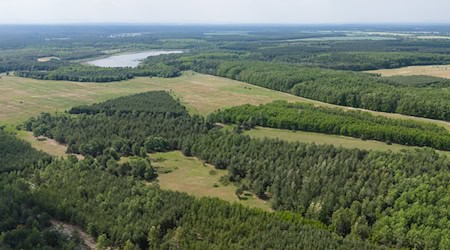A German produces around 11 tons of CO2 every year. We contribute to this through everyday activities such as housework, travel, clothing and food. How many trees would we need to offset this?
Climate change is one of the greatest challenges of our time. One approach to combating climate change is to plant trees that absorb CO2 from the air. But how effective is this method really? This article sheds light on how much CO2 a German produces per year, how much CO2 is released by various everyday activities and how many trees would be needed to offset these CO2 emissions.
An average German produces around 11 tons of CO2 per year. This figure is made up of various everyday activities. In the household, CO2 is released through the consumption of energy for heating, electricity and hot water. Travel, especially air travel and car journeys, also contribute significantly to the CO2 balance. Clothing, especially through production and transportation, and food, especially through agricultural processes and the transportation of food, are other factors that contribute to CO2 emissions.
On average, a tree can bind around 10 to 20 kilograms of CO2 per year, depending on the tree species, age and location. To offset the 11 tons of CO2 emitted by the average German every year, around 550 to 1,100 trees would have to be planted. This shows that planting trees alone is not a sufficient measure to fully offset CO2 emissions.
Soils in Germany also bind CO2. Studies show that soils in Germany can store around 2 to 3 tons of CO2 per hectare every year. Germany has a forest area of around 11.4 million hectares, which corresponds to around a third of the country's total area. These forests make a significant contribution to CO2 sequestration, but here too it is clear that additional measures are needed to compensate for all CO2 emissions.
There are currently around 90 billion trees in Germany. Despite this impressive figure, the number of trees would have to be significantly increased to offset Germany's total CO2 emissions. Based on the average CO2 emissions per capita and the German population of around 84 million people, a total of around 45.65 to 91.3 billion additional trees would be needed.
These additional trees would mean a significant expansion of the forest area. In order to create enough space for the required trees, it would be necessary to almost double Germany's forest area, which is a major challenge given the existing use of land for agriculture, settlements and infrastructure.
The idea of reducing the concentration of CO2 in the air by planting trees makes sense, but is not enough. Comprehensive measures to reduce CO2 emissions are needed to combat climate change effectively. These include the expansion of renewable energies, the promotion of sustainable mobility and more environmentally friendly agriculture.
In conclusion, planting trees is an important part of the fight against climate change, but it is not the only solution. A comprehensive approach that includes both CO2 reduction and CO2 sequestration is needed to effectively address the challenges of climate change.
Sources:
Utopia.de
co2online.de
umweltbundesamt.de










